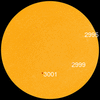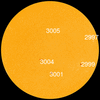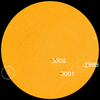Unexpected geomagnetic storm UPDATE
Current conditions
▪︎Solar wind speed: 473.1 km/sec
▪︎density: 10.27 protons/cm3
▪︎ Planetary K-index Now: Kp= 5 storm
G1 (Kp=5) storm for the first time since April 15. The coronal hole facing us sends a high speed solar wind stream with a compression region ahead of it. It contains a period of enhanced southward magnetic field. https://t.co/zSeghKMFFa
An unexpected geomagnetic storm today as the Bz component decided to tip south. Minor (G1) conditions observed.
GEOMAGNETIC STORM--NOW: A minor G1-class geomagnetic storm is underway on April 27th--the result of an unexpected crack in Earth's magnetic field. BsubZ values have dipped as low as -10 nT. This could set the stage for high-latitude auroras, especially in the southern hemisphere where autumn darkness favors visibility
Current conditions
▪︎Solar wind speed: 473.1 km/sec
▪︎density: 10.27 protons/cm3
▪︎ Planetary K-index Now: Kp= 5 storm






